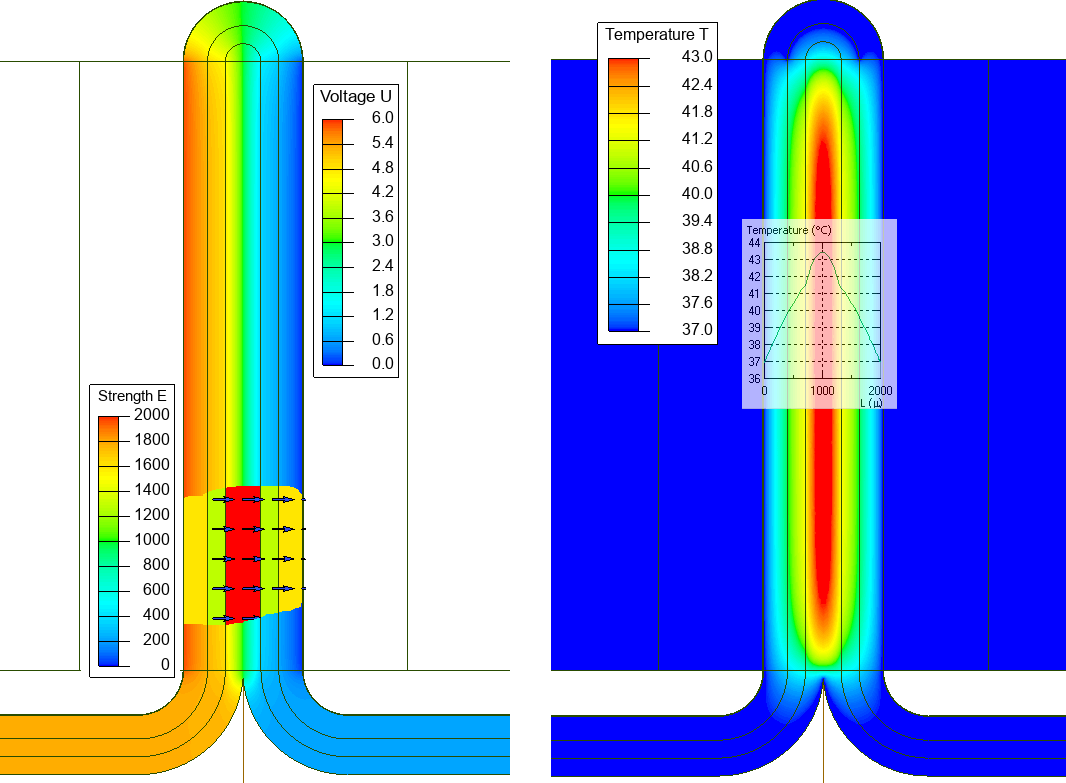Electroporation thermal effects
QuickField simulation example
An electric field is applied to the burned area of the mouse skin using electrodes. It is known that electroporation at the indicated parameters of the pulsed voltage has a disinfecting effect on the infected tissue.
Problem Type
Plane-parallel problem of multiphysics problem of DC Conduction coupled to transient Heat Transfer.
Geometry
Given
Initial skin temperature 37 °C,
Air temperature 25 °C, convection coefficient 5 W/(K·m²)
Voltage V~ = 1000 V, pulse duration 70μs, frequency 84 pulses per second.
| Tissue name | Normal | After electroporation |
|---|---|---|
| Stratum corneum | 1.25e-5 | 0.5 |
| Epidermis | 0.2 | 0.8 |
| Dermis | 0.2 | 0.8 |
| Muscle | 0.4 | 1 |
| Sub tissue | 0.02 | 0.2 |
Task
Calculate the temperature distribution in the mouse skin layers under the action of a pulsed electric field and make sure that the effect of electroporation is non-thermal.
Solution
The electrical conductivities of the skin layers between and outside the electrodes are different, since electroporation affects the electrical conductivity. Since the electric current flows and the heat is generated only if the voltage pulse is applied, we should simulate only the electroporated state.
To find the time-average current and Joule heat value we simulate a DC Conduction prolem and apply time-average voltage value = 1000 * 70e-6 / (1/84) = 5.9 V
Then the generated heat value is used to calculate temperature distribution.
Results
Electric field and temperature distribution in the skin after 80 seconds of voltage application:

- Download simulation files (files may be viewed using any QuickField Edition).